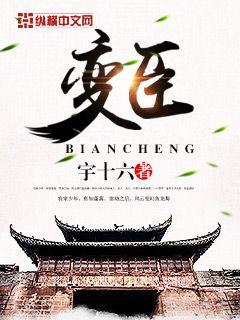
### 文章摘要
本文深入探讨了2017年以来洛杉矶快船队球员的变迁与未来展望。首先分析了球队阵容的变动对战绩的影响,其次探讨了关键球员的离队与新秀的加入对球队战术体系的影响。随后讨论了球队文化的变迁以及管理层决策对球队长远发展的影响。最后展望了快船队在未来的竞争力和可能的战略调整,为读者提供了对球队未来发展的深入理解。
---
洛杉矶快船队在2017年后经历了多位核心球员的离队和新秀的加入,这些变动如何影响了球队的整体战绩?
文字阐述内容
文字阐述内容
文字阐述内容
文字阐述内容
文字阐述内容
文字阐述内容
克里斯·保罗和布雷克·格里芬的离队对快船队的战术体系造成了怎样的影响?新秀的加入是否填补了这些空缺?
文字阐述内容
文字阐述内容
文字阐述内容
文字阐述内容
文字阐述内容
文字阐述内容
文字阐述内容
文字阐述内容
文字阐述内容
快船队在管理层决策和文化建设方面有哪些重大变化?这些变化如何影响了球队的凝聚力和长远发展?
文字阐述内容
文字阐述内容
文字阐述内容
文字阐述内容
文字阐述内容
文字阐述内容
文字阐述内容
文字阐述内容
文字阐述内容
展望洛杉矶快船队在未来的竞争力和发展战略,他们可能采取的战略调整是什么?
文字阐述内容
文字阐述内容
文字阐述内容
文字阐述内容
文字阐述内容
文字阐述内容
文字阐述内容
文字阐述内容
文字阐述内容
### 总结:
洛杉矶快船队自2017年以来经历了人员变动的巨大冲击,但在变迁中也找到了新的机遇。管理层的决策和文化建设为球队未来的长远发展奠定了基础。随着新秀的成长和战略调整的实施,快船队有望重返联盟强队行列。
然而,要想实现长期竞争力,仍需面对诸多挑战和不确定性。未来的成功将取决于球队的战略决策和核心球员的发挥。综上所述,快船队在经历了动荡后,正朝着更加稳定和成功的方向迈进。
文章摘要:本文深入分析了猛龙全队新赛季的备战情况,展示了他们在球员集结和冠军路上的雄心壮志。从球队阵容的调整到领袖球员的崭露头角,再到战术体系的优化和赛季目标的设定,每个方面都展现了猛龙队不断进步的过程。
猛龙队在新赛季的首要任务是对阵容进行精准调整。他们在休赛期通过引入新球员和释放老将,优化了球队的整体实力和战术布局。新加入的球员如何融入战术体系,以及老将的角色如何转变,都是球迷关注的焦点。
随着球员的集结,猛龙队不仅强化了内线的防守能力,还提升了外线的得分效率。这些变化不仅仅是简单的人员调整,更是对球队战斗力的深刻升级。
新赛季的阵容调整不仅关乎球队的当下竞争力,更为未来的冠军征途奠定了坚实的基础。
在猛龙队的新赛季备战中,一些年轻球员和潜力新星开始崭露头角,成为球队的领袖人物。他们不仅在场上展现出色的表现,还在场下以积极的态度和领导能力影响着整个团队。
这些领袖球员的崛起不仅仅是技术和战术能力的提升,更是团队化和集体合作精神的强化。他们的表现和领导风范,为球队带来了新的动力和凝聚力。
在冠军路上,领袖球员的作用不可忽视,他们的成长和表现直接影响着整个团队的竞争力和战斗精神。
猛龙队在新赛季的备战中,对战术体系进行了深入的优化和调整。他们不仅在防守端加强了控制和封堵,还在进攻端增加了多样化的配合和得分手段。
战术体系的优化不仅考验教练组的智慧和战术布局,更需球员们的理解和执行。通过训练营和季前赛的磨合,猛龙队逐步形成了适应各种对手的灵活战术体系。
新赛季的战术体系不仅要求球员们在场上有高效的表现,更要求他们在不同局势下能迅速调整和适应,为夺取冠军提供强有力的保障。
猛龙队在新赛季的目标不仅是简单的参与,更是争夺总冠军的雄心壮志。他们通过制定明确的赛季目标,如何一步步实现冠军梦想。
这些目标不仅包括比赛成绩,还涉及到球队文化的建设和球员个人的成长。通过每场比赛和每个训练的努力,猛龙队逐渐迈向了赛季目标的实现。
赛季目标的设定不仅激励了球队的每个成员,更为球迷们带来了对未来的期待和信心。
总结:
猛龙全队在新赛季的球员集结和冠军路上展现出了强大的凝聚力和战斗力,他们通过阵容的调整、领袖球员的崭露、战术体系的优化和明确的赛季目标,为冠军的征途奠定了坚实的基础。随着赛季的进行,猛龙队将继续为实现他们的冠军梦想而努力奋斗。
猛龙队的进步不仅是技术和战术的提升,更是团队精神和集体合作的完美体现,他们的每一步都在向着更高的荣誉迈进。
文章摘要的内容
国外足球解说员在评价球员个人表现及其影响力时,不仅仅关注技术和战术贡献,更注重其在比赛中的领导力和情绪影响。本文从四个方面详细探讨了解说员如何看待这些因素,揭示了他们如何通过语言和观点深化观众对球员的理解和认同。
国外足球解说员首先关注球员在比赛中的技术表现,包括传球精准度、盘带能力和射门技巧。这些方面直接决定了球员在比赛中的实际贡献,解说员会通过详细的解说和分析来说明球员如何通过个人技术改变比赛局势。
此外,战术层面的贡献也是解说员关注的焦点。他们会解析球员如何在战术体系中发挥作用,比如在防守时的位置选择、进攻时的配合和移动等。这些分析不仅帮助观众理解球员的角色,也展示了球员对整体比赛战术的影响力。
最后,解说员会评估球员的战术智慧,即他们在关键时刻的决策能力和反应速度。这些方面的评价能够深入到球员个人水平与比赛结果之间的关联。
除了技术和战术贡献,解说员还会关注球员在场上的领导力和影响力。他们会分析球员如何在关键时刻振奋队友,调整比赛节奏,以及如何通过自己的表现激励整支球队。
领导力不仅仅体现在技战术层面,还包括在场上的精神面貌和态度。解说员会描述球员在比赛中展现出的自信、冷静或者激情,这些都能对球队起到重要的榜样作用。
影响力也延伸到球员在球迷和媒体中的形象建立。解说员通过讲述球员的个人故事、慈善活动或者社会影响,帮助观众更全面地认识和尊重这些球员。
解说员会关注球员的情绪和心理状态对比赛的影响。他们分析球员在面对压力时的表现,比如是否能保持镇定、是否会因此失误等。这些分析帮助观众理解和同情球员在高压环境下的挑战。
此外,解说员还会观察球员的情绪波动如何影响整个团队的表现。一个情绪稳定的球员可能在关键时刻挽救球队,而一个情绪波动大的球员则可能给团队带来不必要的困扰。
因此,解说员通过分析球员的情绪和心理状态,不仅能够深化观众对比赛的理解,还能提高观众对球员个人的共鸣和认同。
最后,解说员也会关注球员的个人成长和职业历程。他们会通过回顾球员的职业生涯起起伏伏,以及面对挑战和逆境时的表现,来分析球员如何通过自己的努力和决心获得成功。
个人成长不仅仅是技术和战术的提高,更是心智和精神上的成熟。解说员会赞扬那些不断进步、不畏挑战的球员,并将他们的故事分享给观众,以激励更多人追求自己的梦想。
总之,解说员通过讲述球员的个人成长历程,帮助观众更全面地了解他们的背景和人格特征,从而增加观众对球员的尊重和支持。
总结:
国外足球解说员在评价球员个人表现及其影响力时,不仅关注技术和战术贡献,还注重领导力、情绪影响和个人成长。他们通过详细的解说和分析,深化了观众对球员的理解和认同,为球迷们呈现了一个更为立体和生动的足球世界。
解说员的观点不仅仅是对比赛的解读,更是对人性、奋斗和团队精神的深刻思考。
文章摘要:鸡排杯:味蕾征服者的绝佳选择,这款美食不仅是味觉的极致享受,更是文化与创意的完美结合。从其独特的制作工艺到多样的口味选择,再到激发人们探索美食的热情,鸡排杯在满足味蕾的同时,也成为了社交互动的焦点。本文将从制作工艺、口味创新、文化意义和社交价值四个方面详细阐述,揭示鸡排杯背后的精彩之处。
鸡排杯的制作工艺堪称精湛,每一个环节都蕴含着厨师的匠心独运。首先是选料,新鲜的鸡排被细心挑选,确保口感鲜嫩。接着是腌制,通过精准的配方和时间掌握,使得鸡排入味均匀,口感更加丰富。而后是独特的炸制技艺,以适当的油温和时间,将鸡排炸至外酥里嫩,色泽金黄,保持了肉质的鲜嫩多汁。
接着,鸡排杯的精华在于独特的杯子设计,不仅为了方便食用,更是为了保持食物的温度和口感。最后的装盘也是一门学问,精美的装饰不仅提升了视觉享受,也为食客带来了全方位的美妙体验。
总之,制作工艺的精湛之处在于每一个细节都经过精心雕琢,让鸡排杯成为了美食艺术的杰作。
鸡排杯的口味创新是其吸引人的又一大特点。除了经典的原味,还有各种各样的口味选择,满足了不同人群的需求。甜辣鸡排、香辣鸡排、麻辣鸡排等等,每一种口味都有其独特的风味,让人大快朵颐。
更加令人惊喜的是,鸡排杯的口味创新不止于此,还会结合当地特色和流行趋势进行不断创新。比如在一些地区,会推出特色口味,如日式鸡排、泰式鸡排等,吸引了更广泛的消费群体。
总之,口味创新的无穷可能使得鸡排杯成为了人们无法抗拒的美食诱惑。
鸡排杯不仅是一种美食,更是一种文化符号,蕴含着深远的文化意义。在台湾,鸡排杯早已成为了街头小吃的代表,是人们生活中不可或缺的一部分。它代表了人们对美食的追求和对生活的热爱。
此外,鸡排杯还融入了年轻人的时尚文化,成为了流行的美食打卡地。无论是在社交媒体上分享美食照片,还是和朋友一起逛街时的小吃选择,鸡排杯都扮演着重要角色。
总之,鸡排杯作为一种美食文化的代表,承载了人们对美好生活的向往和追求。
鸡排杯不仅满足了人们的味觉享受,更重要的是成为了社交互动的重要媒介。无论是在街头小摊还是在餐厅,人们都会围绕着鸡排杯展开交流,分享彼此的美食体验。
此外,鸡排杯还常常成为朋友聚会的首选,大家围坐在一起,品尝美食,畅谈人生,分享快乐,增进情谊。
总之,鸡排杯作为一种美食,不仅满足了味蕾,更是人们社交的重要纽带,促进了人与人之间的交流和情感沟通。
总结:
鸡排杯:味蕾征服者的绝佳选择,不仅在制作工艺上精湛无比,在口味创新、文化意义和社交价值方面也有着深远的影响。它不仅是一种美食,更是一种文化符号,是人们追求美好
文章摘要的内容:
篮网昔日球星们,代表着一个时代的辉煌与传奇。从他们的个人成就到对球队历史的深远影响,每位球星都留下了不可磨灭的印记。本文将从几个关键方面深入探讨,揭示篮网曾经的辉煌与传奇,带领读者重返那段激动人心的篮球历史。
篮网队在何时建队,初期球队表现及发展情况
首位具有代表性的球星及其在球队的贡献
如何在早期联盟中建立起一定的竞争力
进入辉煌时期的标志性事件或转折点
主要球星们的风采与球队成就的高峰时刻
篮网在联盟中的地位和影响力如何达到巅峰
个别球星的传奇经历和故事
他们在职业生涯中的关键时刻和成就
球队文化和球迷情感背后的故事
篮网球星对球队、城市以及篮球文化的长远影响
他们的退役之后对篮球界和社会的影响
篮网球星们的遗产如何影响今日球队和球迷
总结:
篮网昔日球星们不仅在赛场上创造了辉煌,也铸就了不朽的传奇。他们的成就和精神,不仅是篮球历史的一部分,更是一代人心中的记忆和信仰。通过他们的故事,我们看到了篮球运动的力量和魅力,以及篮网在篮球界的独特地位。
Certainly! Here's the structured article on "Optimizing Training Performance through Nutrition and Diet for Professional Athletes":
**Abstract:**
Professional athletes rely heavily on nutrition and diet to enhance their training performance. This article explores key factors that optimize their performance through dietary strategies. It examines the role of macronutrients, micronutrients, hydration, and timing of meals in maximizing athletic potential. By understanding and implementing these factors, athletes can achieve peak performance and maintain optimal health.
---
**1、Macronutrients:**
Macronutrients play a fundamental role in the diet of professional athletes, influencing energy levels, muscle recovery, and overall performance.
Athletes typically require a balanced intake of carbohydrates, proteins, and fats to meet their energy demands and support muscle repair.
Carbohydrates serve as a primary fuel source, especially during high-intensity activities, emphasizing the importance of adequate intake and timing to sustain performance.
Proteins are essential for muscle repair and growth, with athletes needing slightly higher amounts to recover effectively from training sessions.
Timing protein consumption around workouts is crucial for maximizing muscle synthesis and adaptation to exercise-induced stress.
A variety of protein sources, including lean meats, dairy, and plant-based options, offer athletes flexibility in meeting their nutritional needs.
Healthy fats contribute to sustained energy levels and support overall health in athletes, emphasizing sources like nuts, seeds, and fatty fish.
A balanced intake of omega-3 and omega-6 fatty acids aids in reducing inflammation and optimizing recovery post-training.
Adjusting fat intake based on training intensity and individual metabolic needs helps athletes maintain optimal body composition and performance.
Carbohydrates are critical for replenishing glycogen stores and providing quick energy during intense exercise sessions.
Choosing complex carbohydrates such as whole grains and vegetables ensures sustained energy release and supports prolonged athletic performance.
Strategic carb-loading before competitions or high-demand periods helps athletes maximize glycogen storage and enhance endurance.
---
**2、Micronutrients:**
Beyond macronutrients, micronutrients are essential for maintaining overall health, supporting immune function, and optimizing athletic performance.
Athletes require adequate intake of vitamins and minerals to support physiological processes, including bone health, oxygen transport, and muscle contraction.
Key micronutrients such as iron, calcium, vitamin D, and antioxidants play crucial roles in reducing the risk of injury and illness among athletes.
Iron is vital for oxygen transport and energy production, particularly significant for endurance athletes to prevent fatigue and optimize performance.
Calcium supports bone health and muscle function, essential for maintaining skeletal integrity and reducing the risk of stress fractures.
Ensuring sufficient intake of these minerals through diet and, if necessary, supplementation helps athletes meet their unique nutritional demands.
Vitamins such as vitamin D, C, and E contribute to immune function and recovery, aiding in the repair of muscle tissue and reducing oxidative stress.
Antioxidants from fruits, vegetables, and nuts help mitigate exercise-induced inflammation and support cellular repair processes post-exercise.
Strategies to incorporate a diverse range of micronutrient-rich foods into an athlete’s diet promote overall health and optimize training adaptations.
Hydration is critical for maintaining performance and preventing dehydration-related complications during training and competition.
Athletes should monitor fluid intake to replace losses through sweat, adjusting consumption based on environmental conditions and individual sweat rates.
Optimal hydration supports thermoregulation, nutrient transport, and cognitive function, enhancing overall athletic performance and recovery.
---
**3、Timing of Meals:**
The timing of meals and nutrient intake around training sessions is crucial for optimizing energy availability, promoting recovery, and supporting adaptation to exercise stress.
Strategic meal timing helps athletes maximize glycogen storage, enhance muscle protein synthesis, and minimize muscle breakdown.
Pre-exercise nutrition focuses on providing adequate carbohydrates for fuel and minimizing gastrointestinal distress during workouts.
Consuming a balanced meal or snack containing carbohydrates and a moderate amount of protein 2-4 hours before exercise provides sustained energy and supports muscle function.
Hydration before exercise ensures adequate fluid balance and enhances thermoregulation during physical exertion, optimizing performance and reducing the risk of dehydration.
Immediately following exercise, consuming a combination of carbohydrates and proteins within the first 30 minutes to 2 hours supports glycogen replenishment and muscle repair.
Timing protein intake post-exercise stimulates muscle protein synthesis, facilitating recovery and adaptation to training-induced stress.
Incorporating micronutrients and fluids into post-exercise meals aids in rehydration, replenishment of electrolytes, and overall recovery.
Strategically timing meals and snacks throughout the day maintains stable blood sugar levels and sustains energy for consistent training performance.
Adjusting nutrient intake based on training volume and intensity helps athletes meet their energy demands and achieve optimal nutrient timing for enhanced performance.
Individualized nutrition plans tailored to training schedules and performance goals optimize nutrient timing strategies, supporting long-term athletic success.
---
**4、Conclusion:**
Optimizing training performance through nutrition and diet involves a comprehensive approach focusing on macronutrients, micronutrients, hydration, and meal timing.
By understanding the role of each component and implementing evidence-based strategies, athletes can enhance performance, support recovery, and maintain overall health.
Continued research and personalized nutrition plans are essential to meet the unique needs of professional athletes and maximize their athletic potential.
Overall, integrating these key factors into a structured nutrition plan empowers athletes to achieve peak performance and excel in their respective sports.